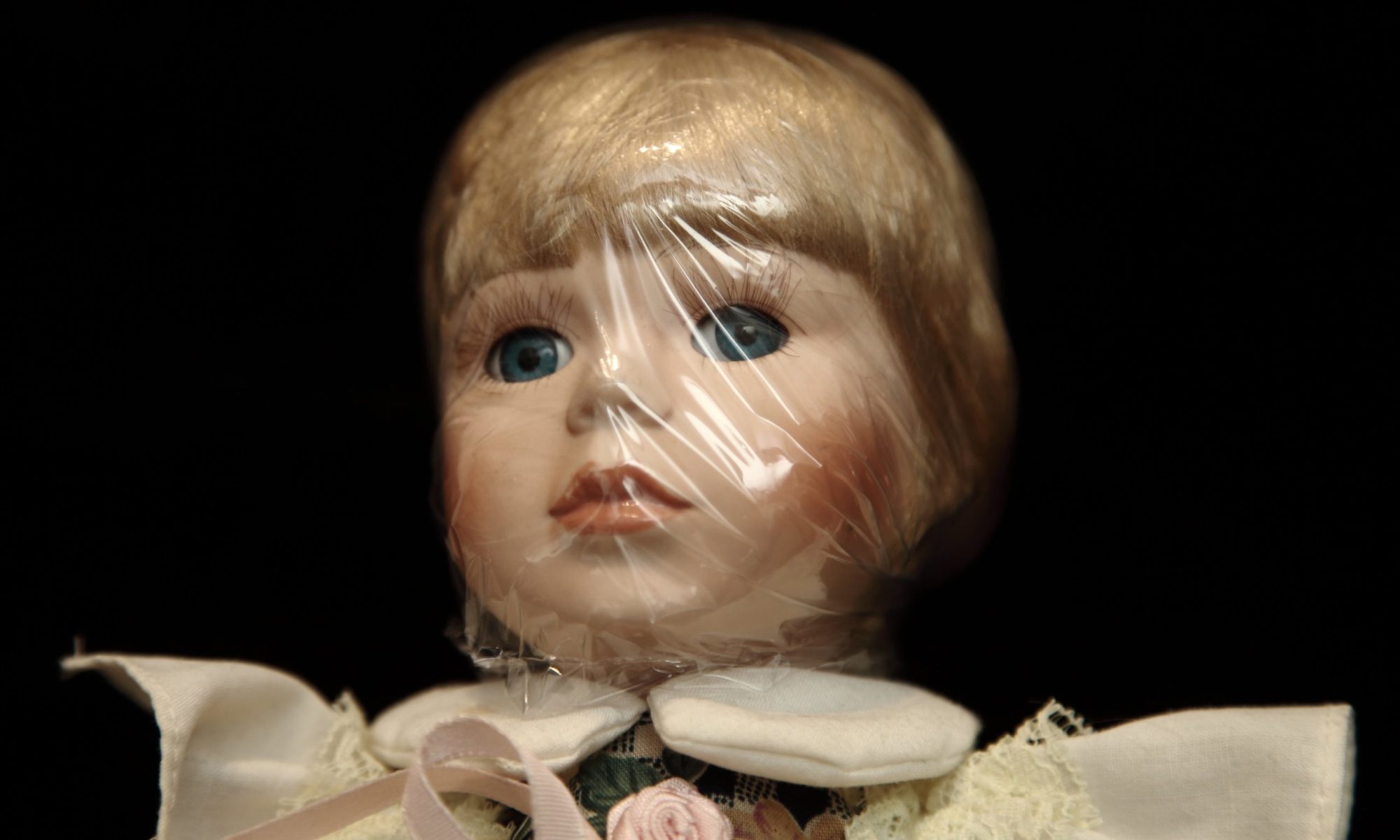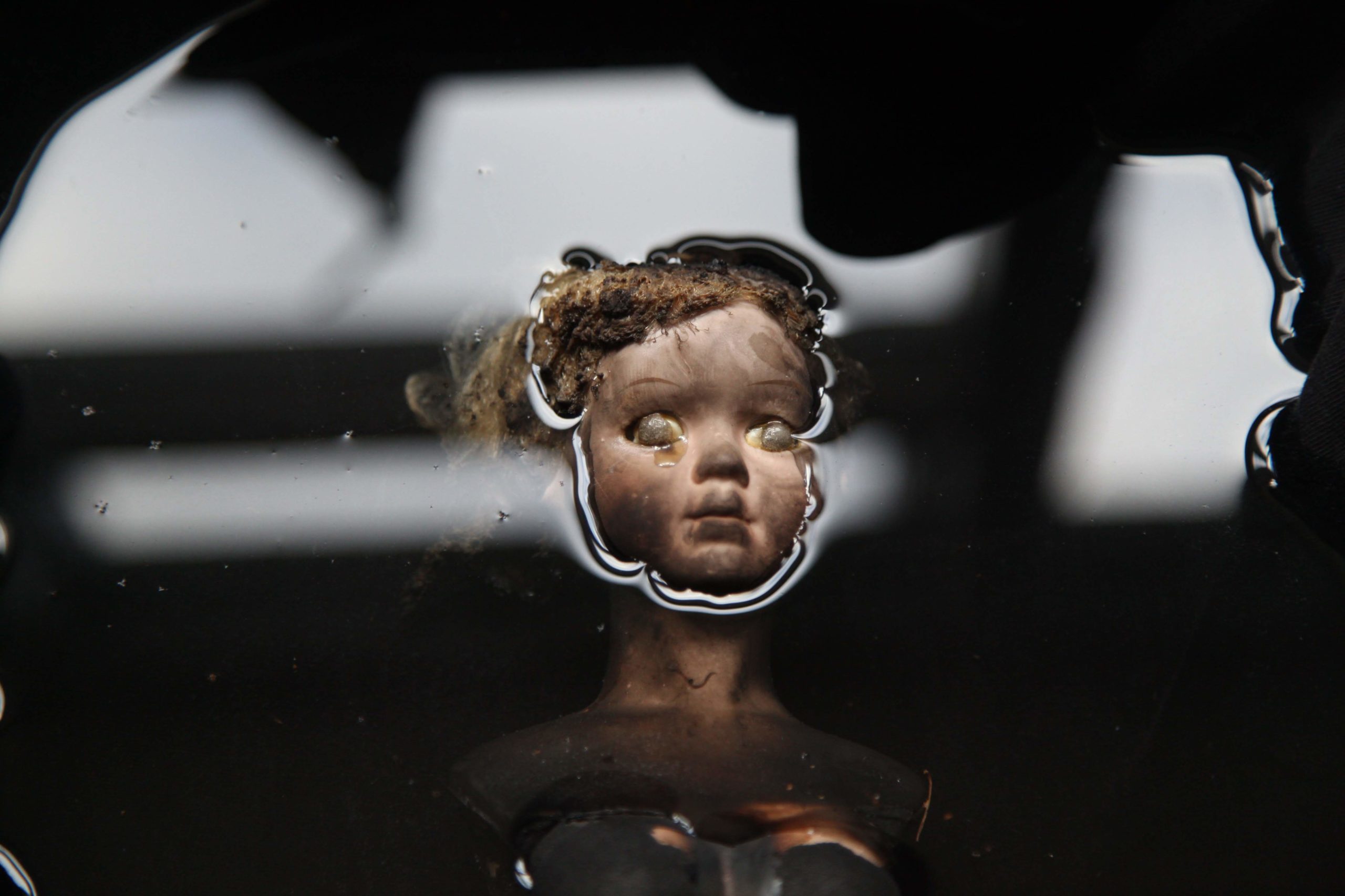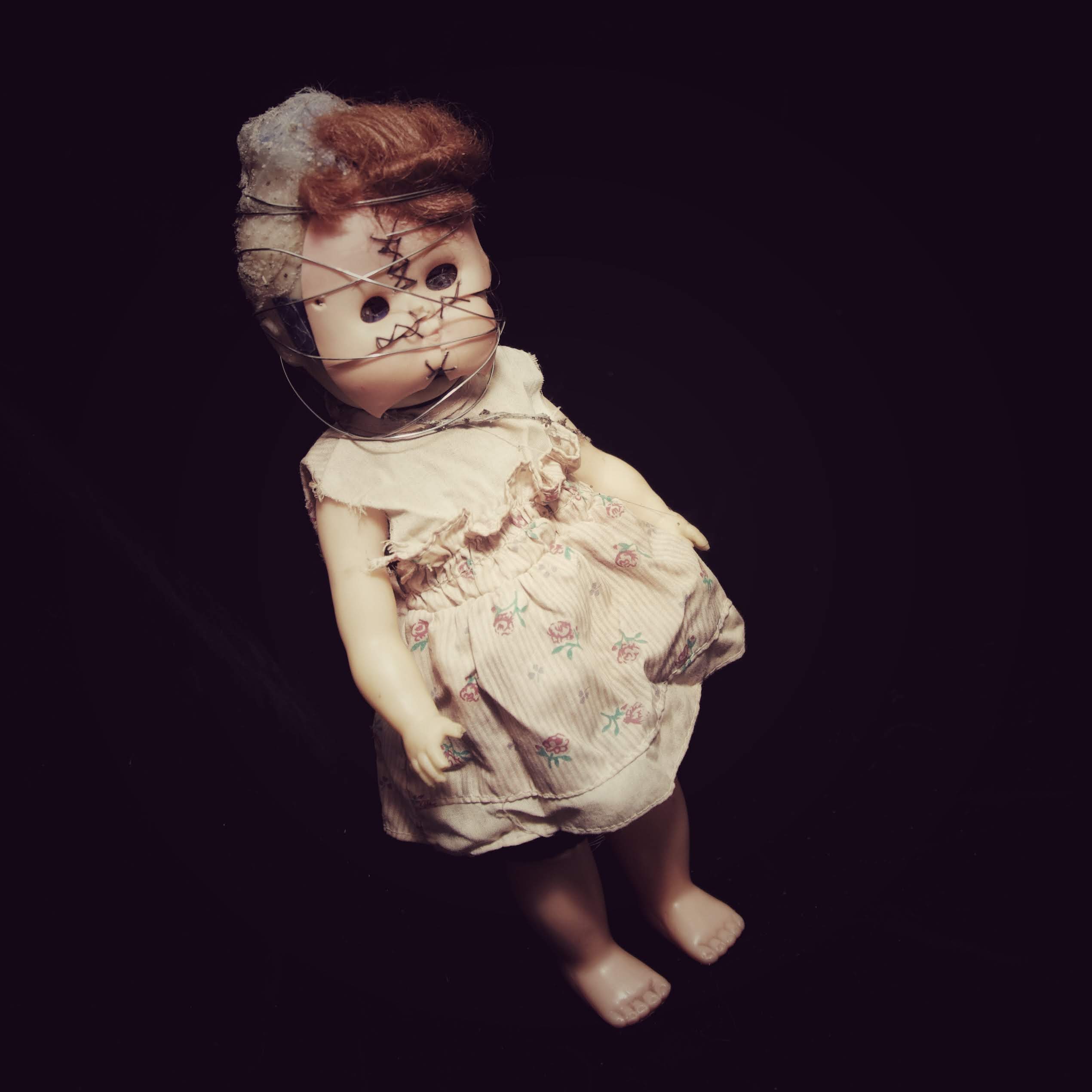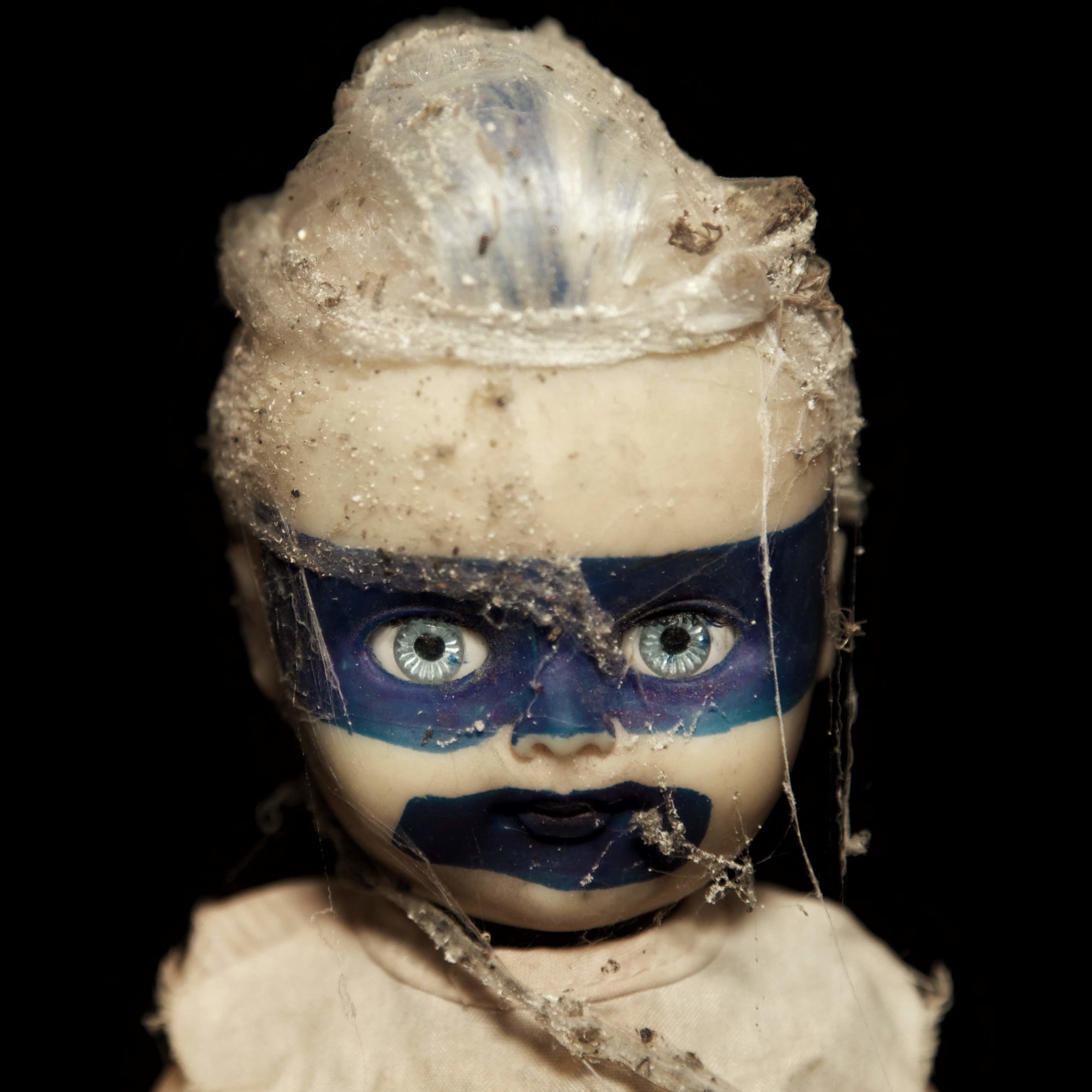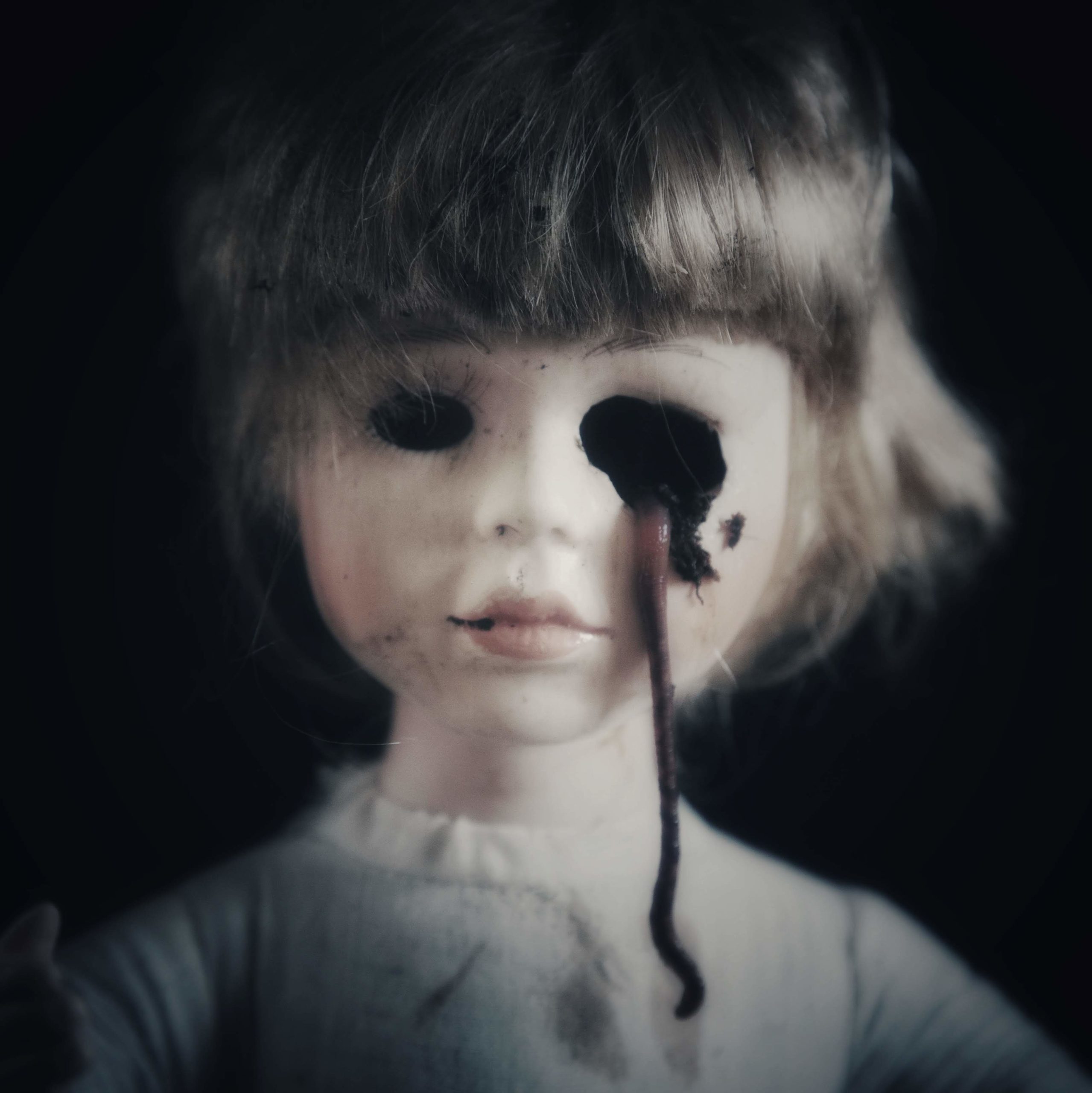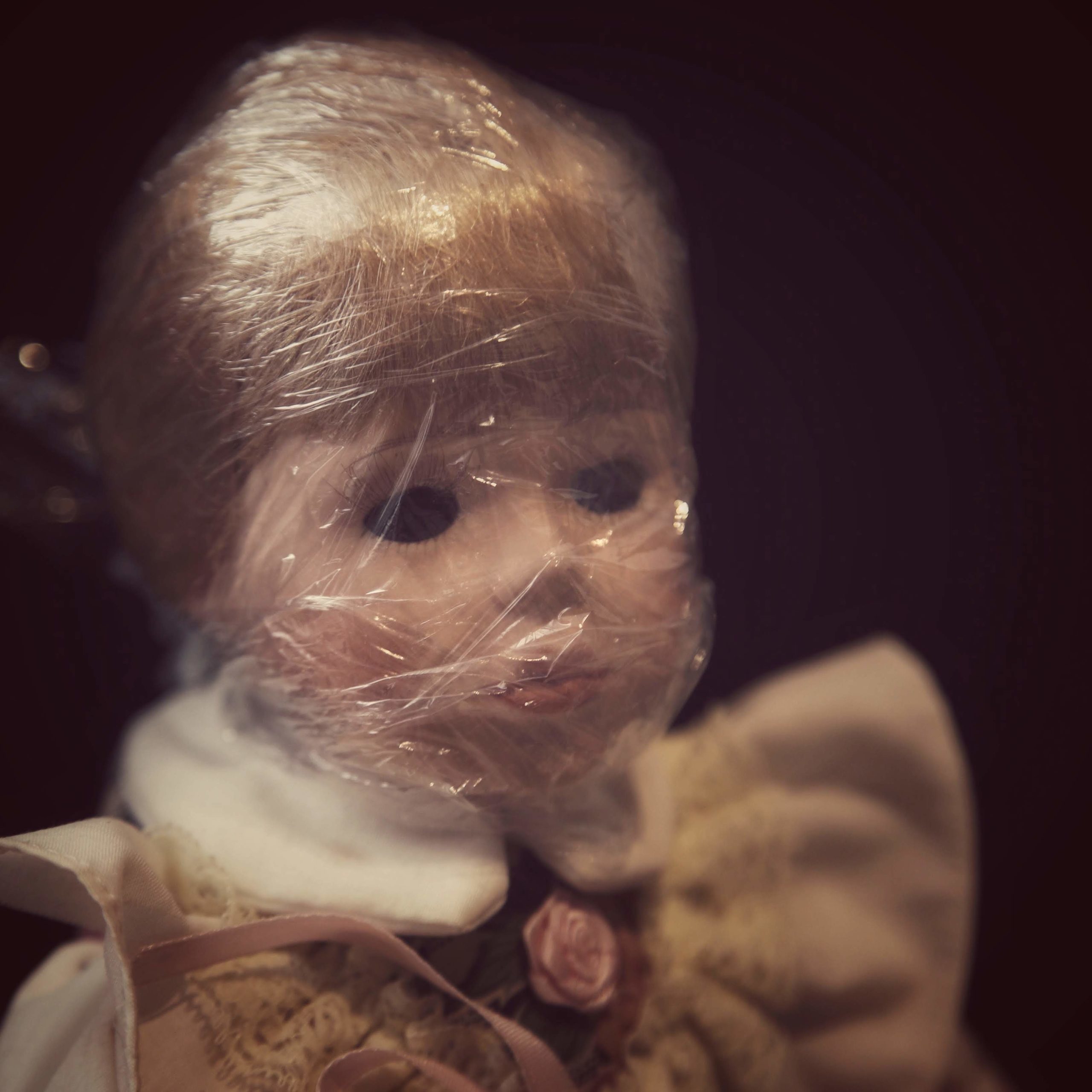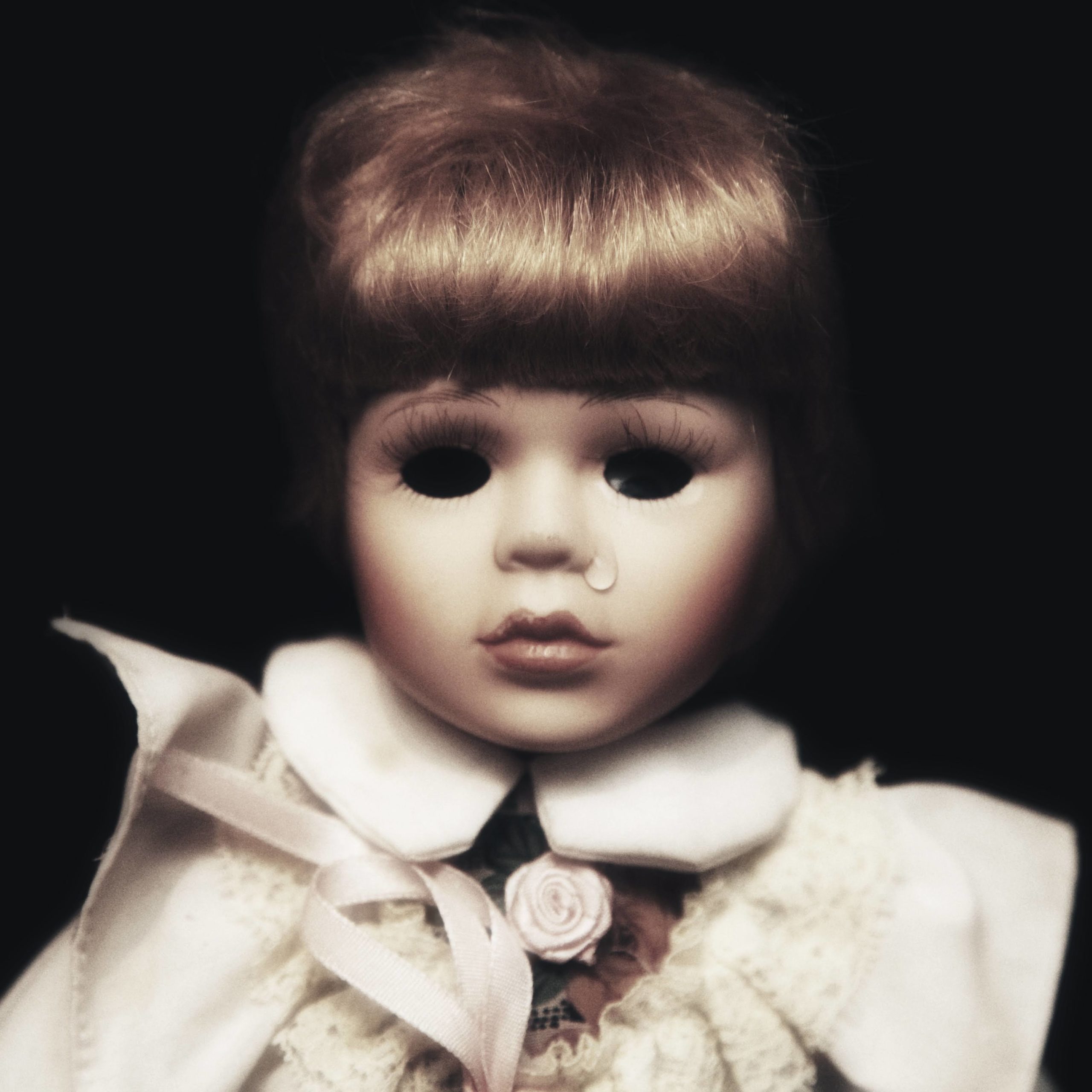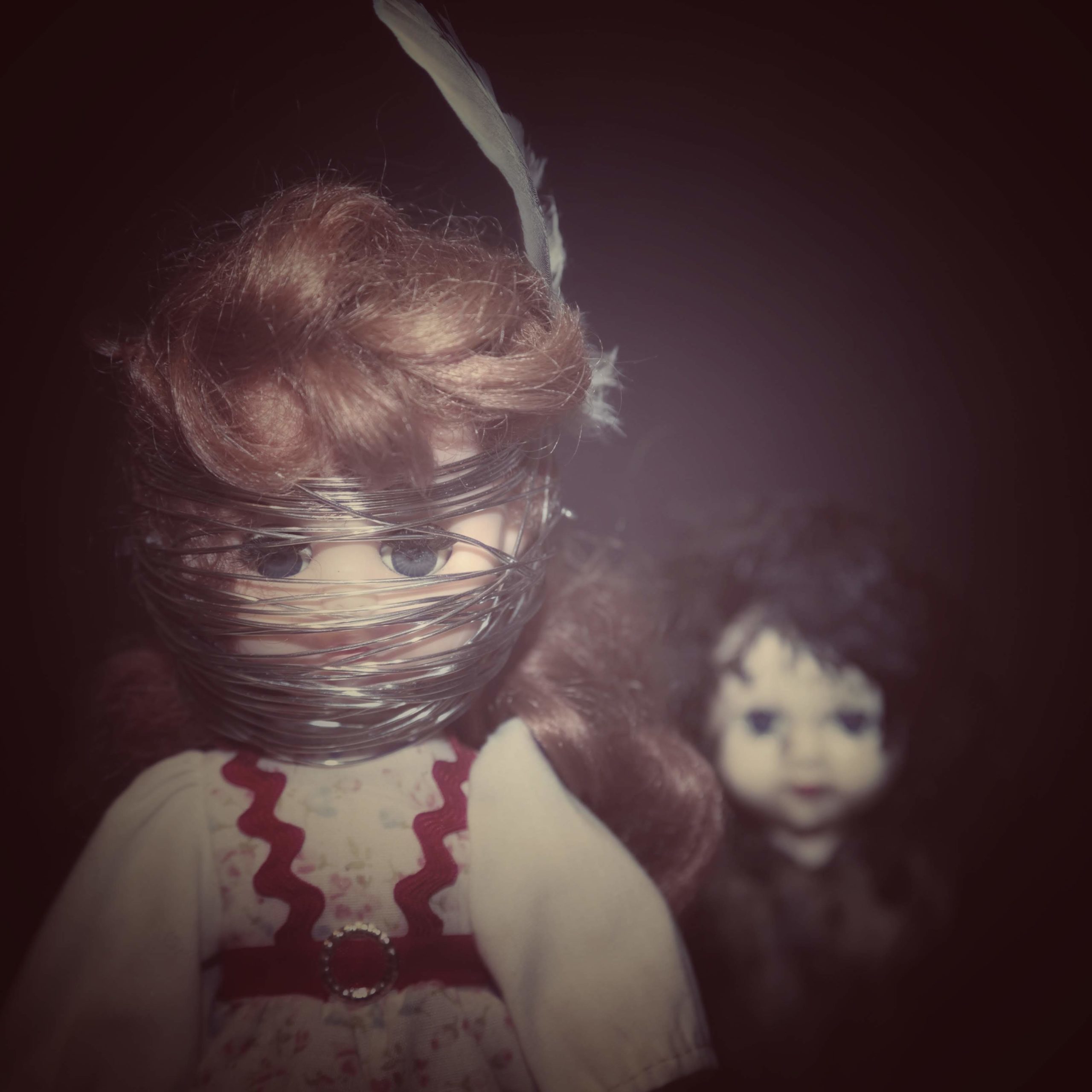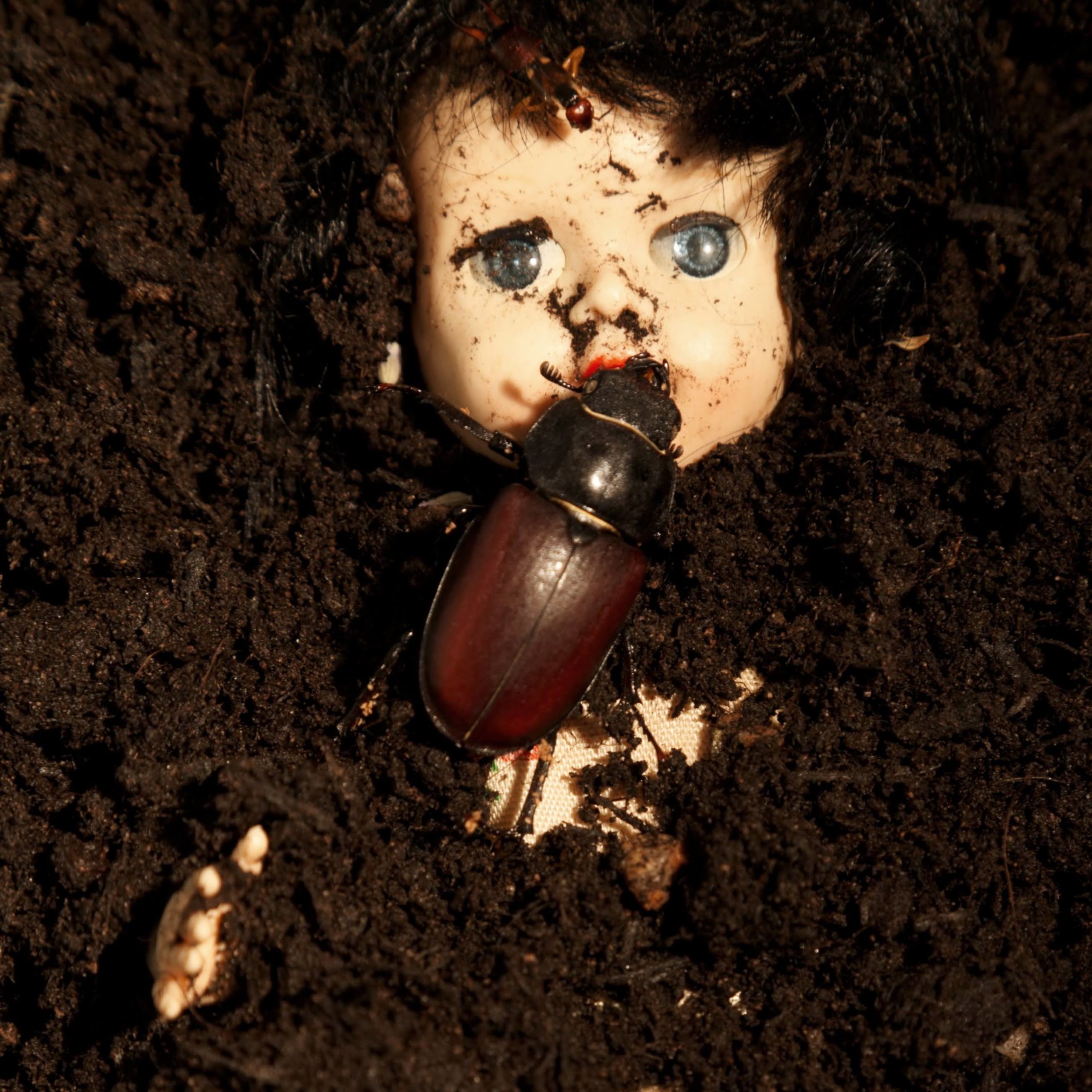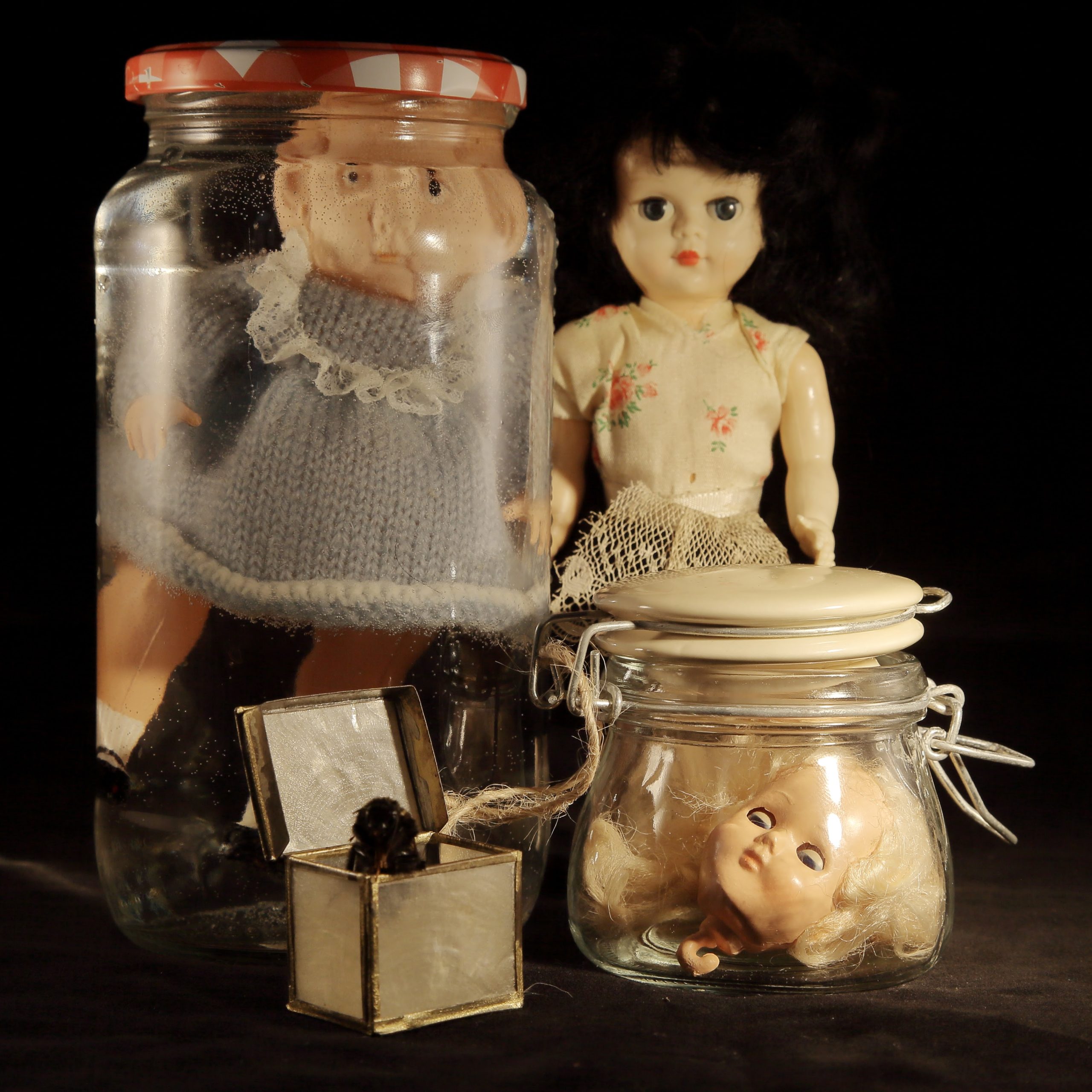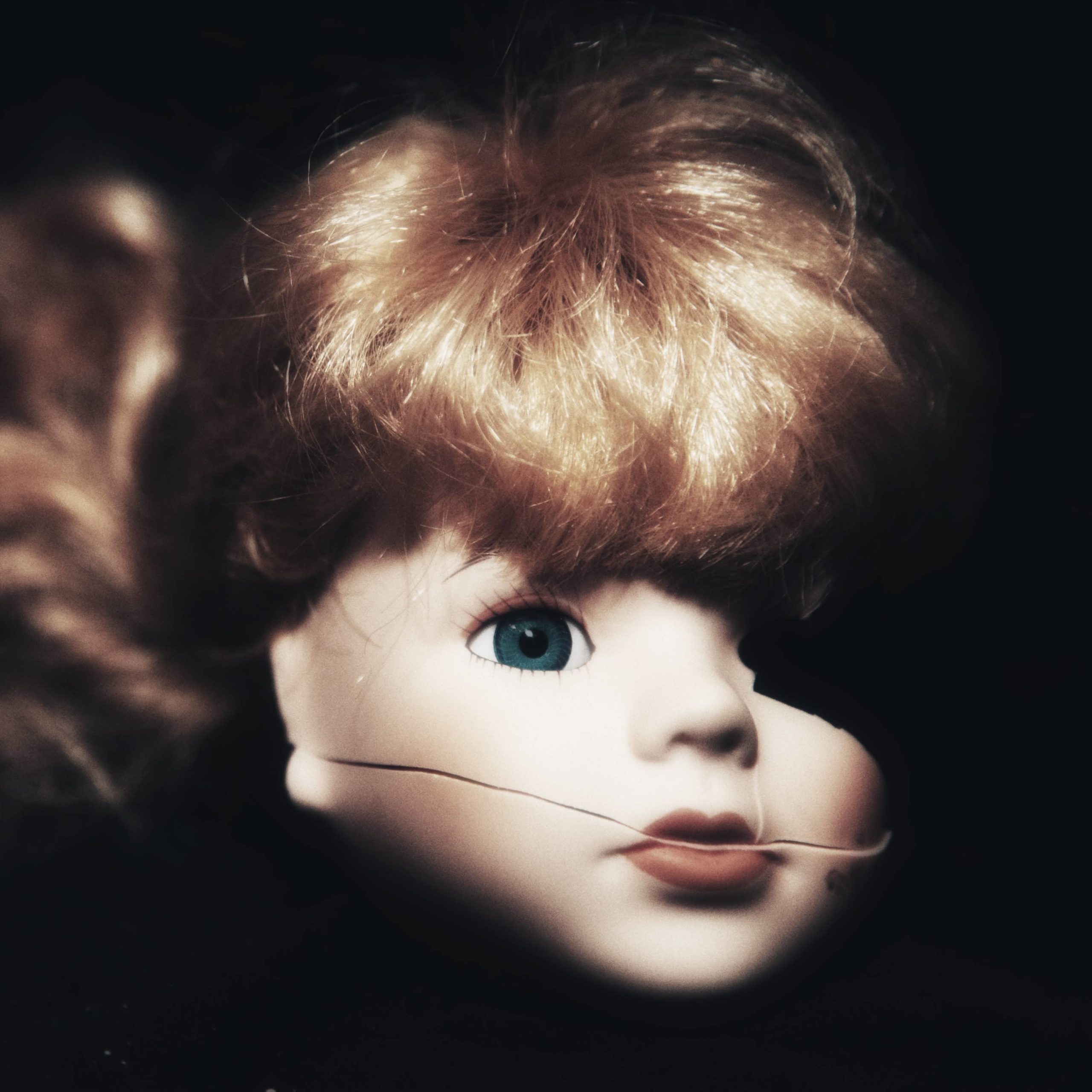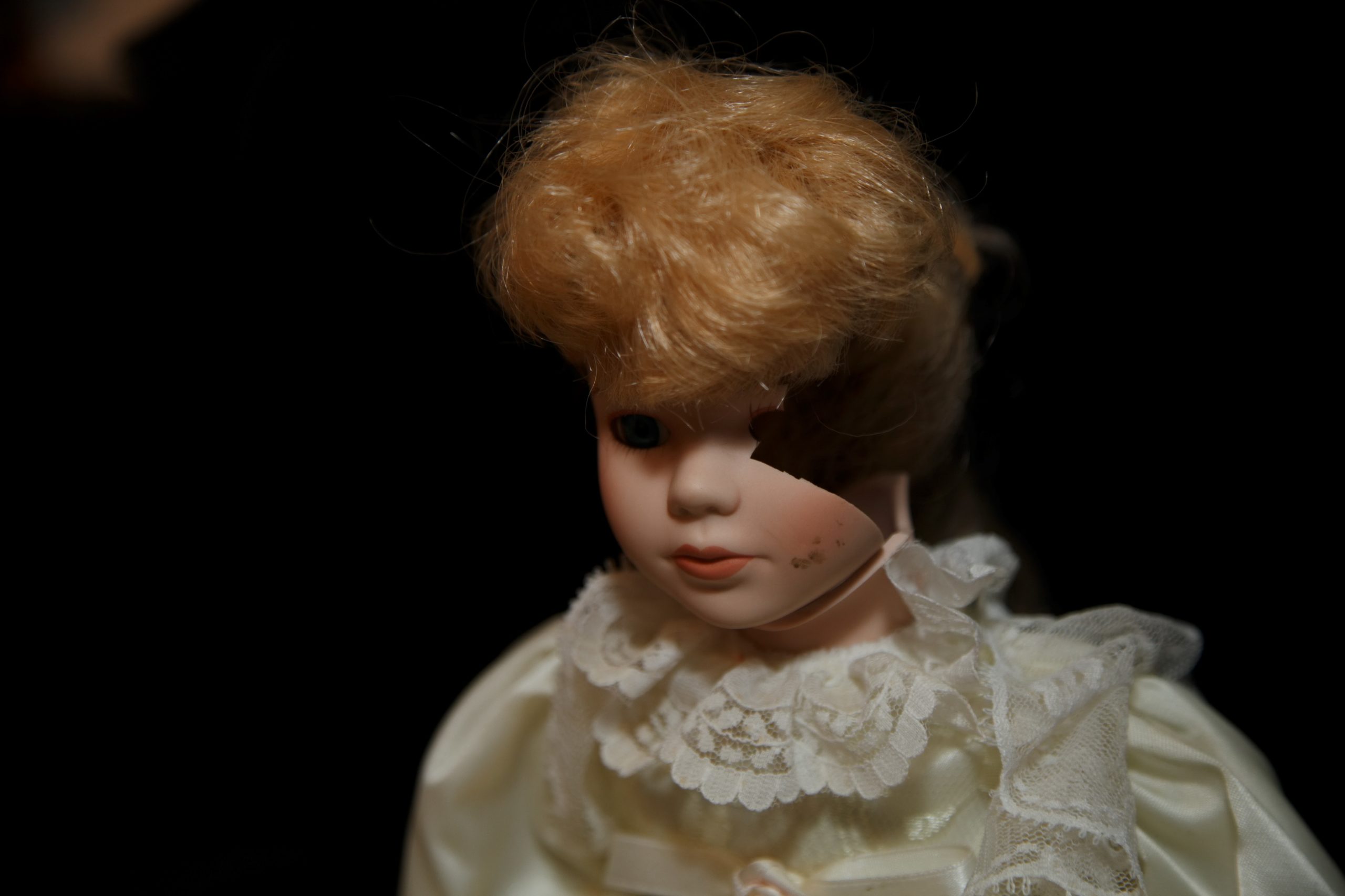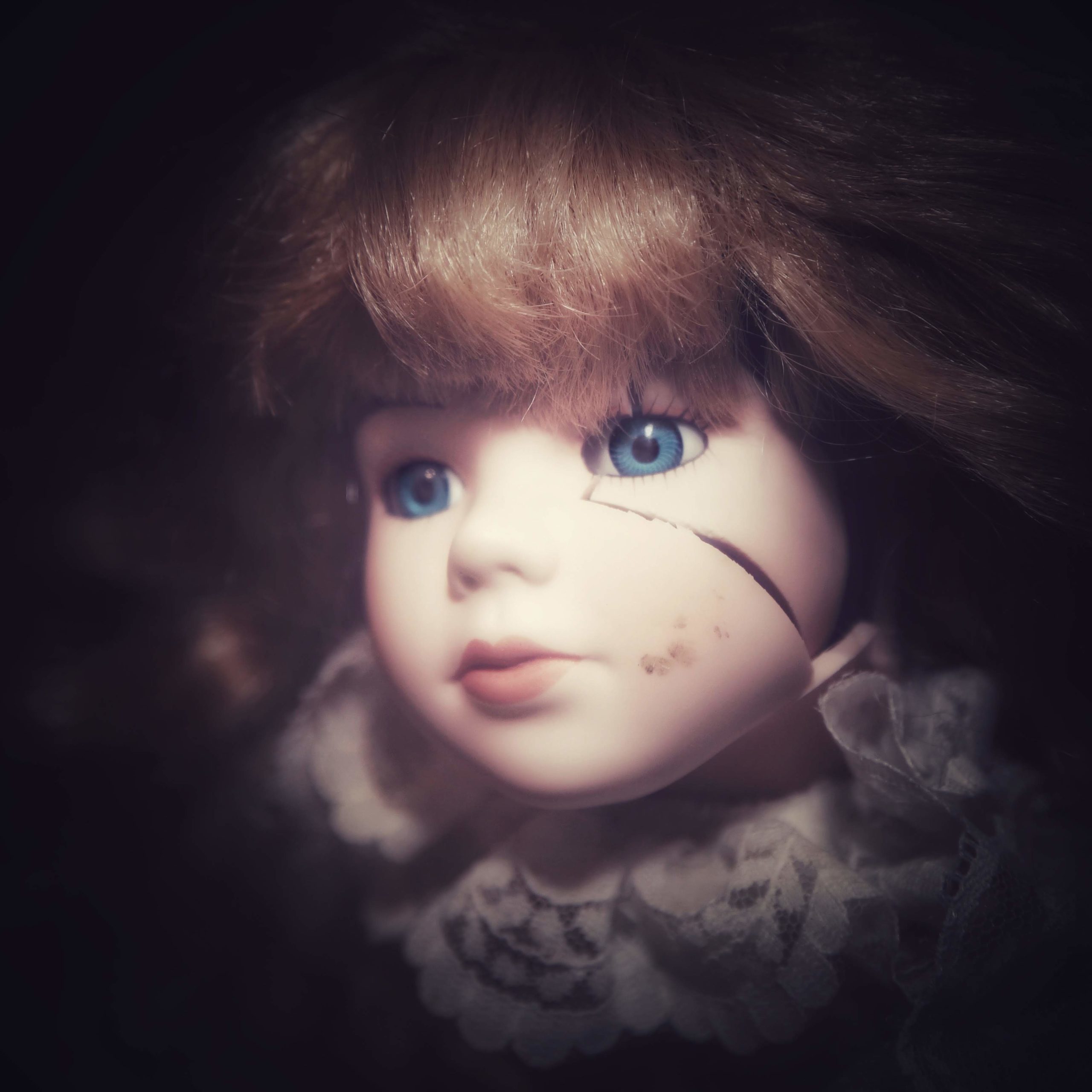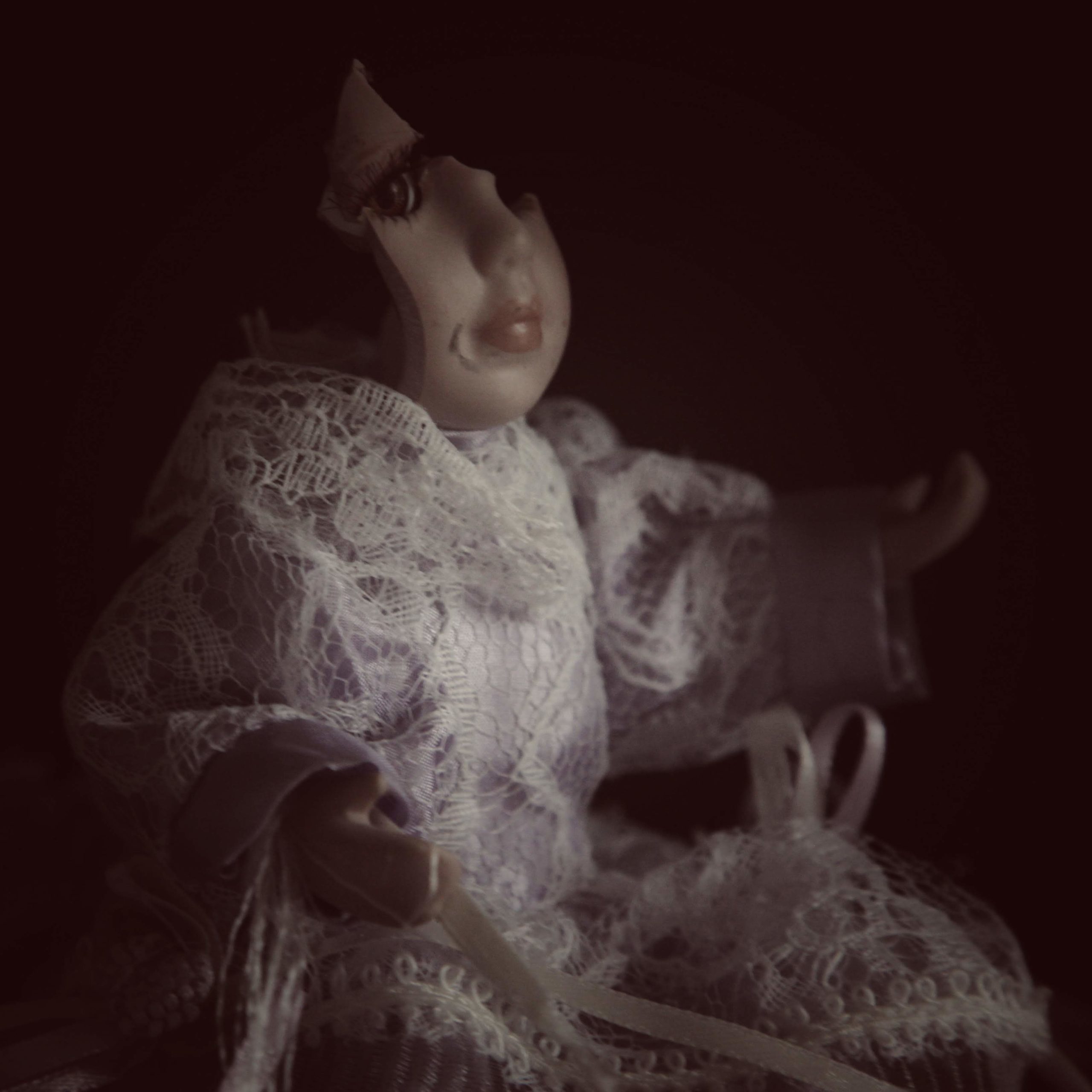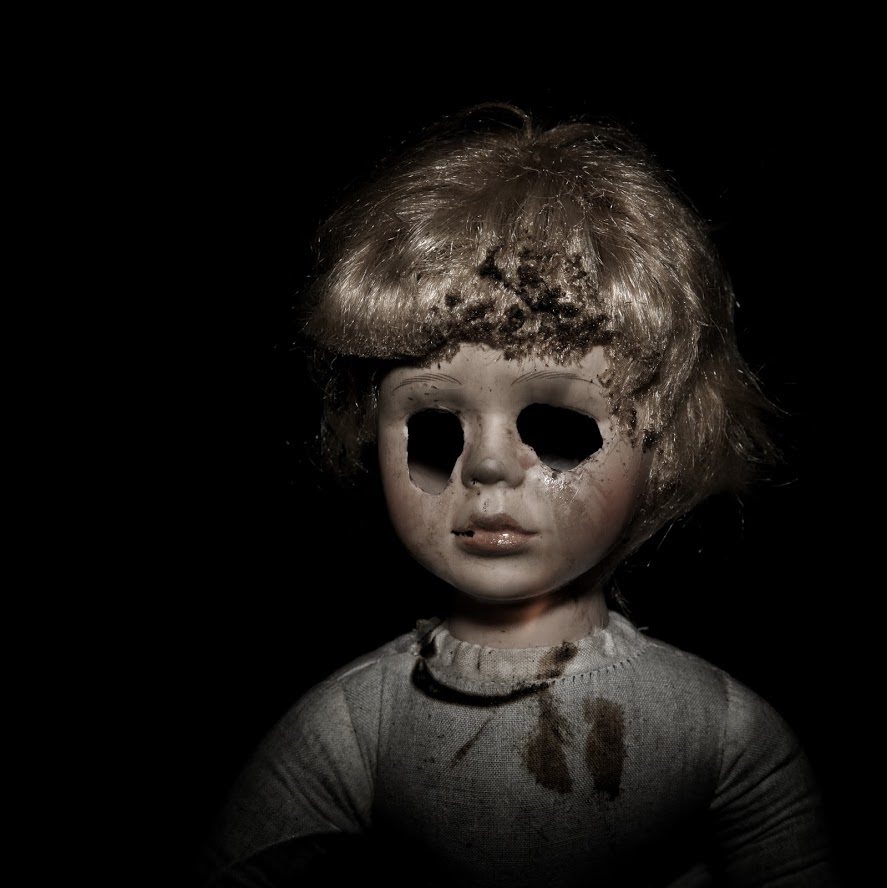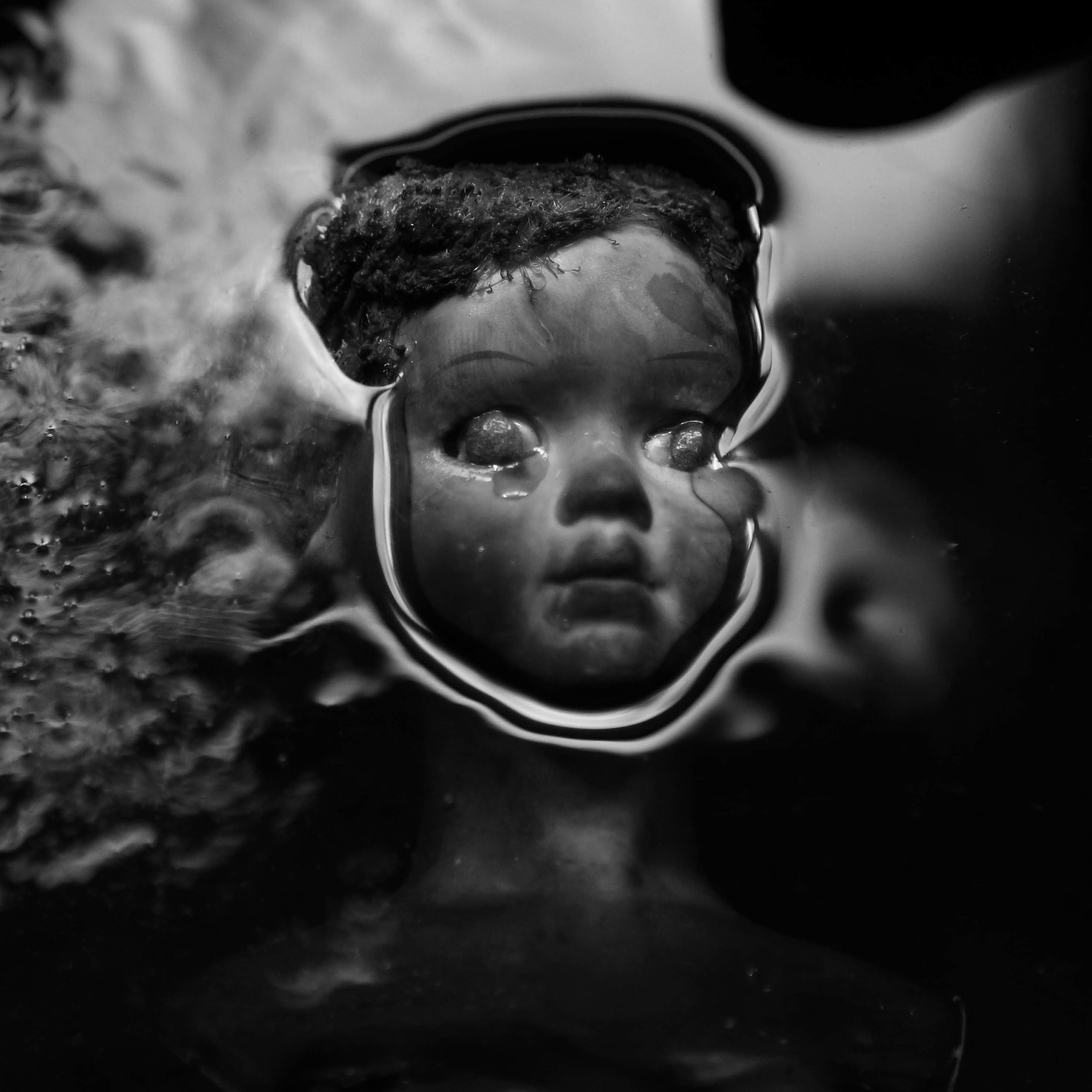“…a particularly favourable condition for awakening uncanny feelings is created when there is intellectual uncertainty whether an object is alive or not, and when an inanimate object becomes too much like an animate one”
– Sigmund Freud, Das Unheimlich (The Uncanny)
“It is an anxious, sometimes a dangerous thing to be a doll. Dolls cannot choose; they can only be chosen; they cannot ‘do’; they can only be done by.”
– Rumer Godden, The Dolls’ House
A composite of china, plastic and fabric, dolls serve as a metaphor for our own fragility and mortality. But they are also the antithesis of us; they can be abused but do not suffer as we do, or can, they remain glassy-eyed, emotionless, stoical. The damage is merely cosmetic. Yet we are disturbed nonetheless; we have grown up with these little avatars, we have treated them as real people held and been held by them.
For Freud, unheimlich is a doubt as to ‘whether an apparently animate being is really alive; or, conversely, whether a lifeless object might be in fact animate’.
The threat of going blind is often, for Freud at least, a substitute for the dread of being (metaphorically) castrated; the eye is a substitute or stand-in for the male organ.
